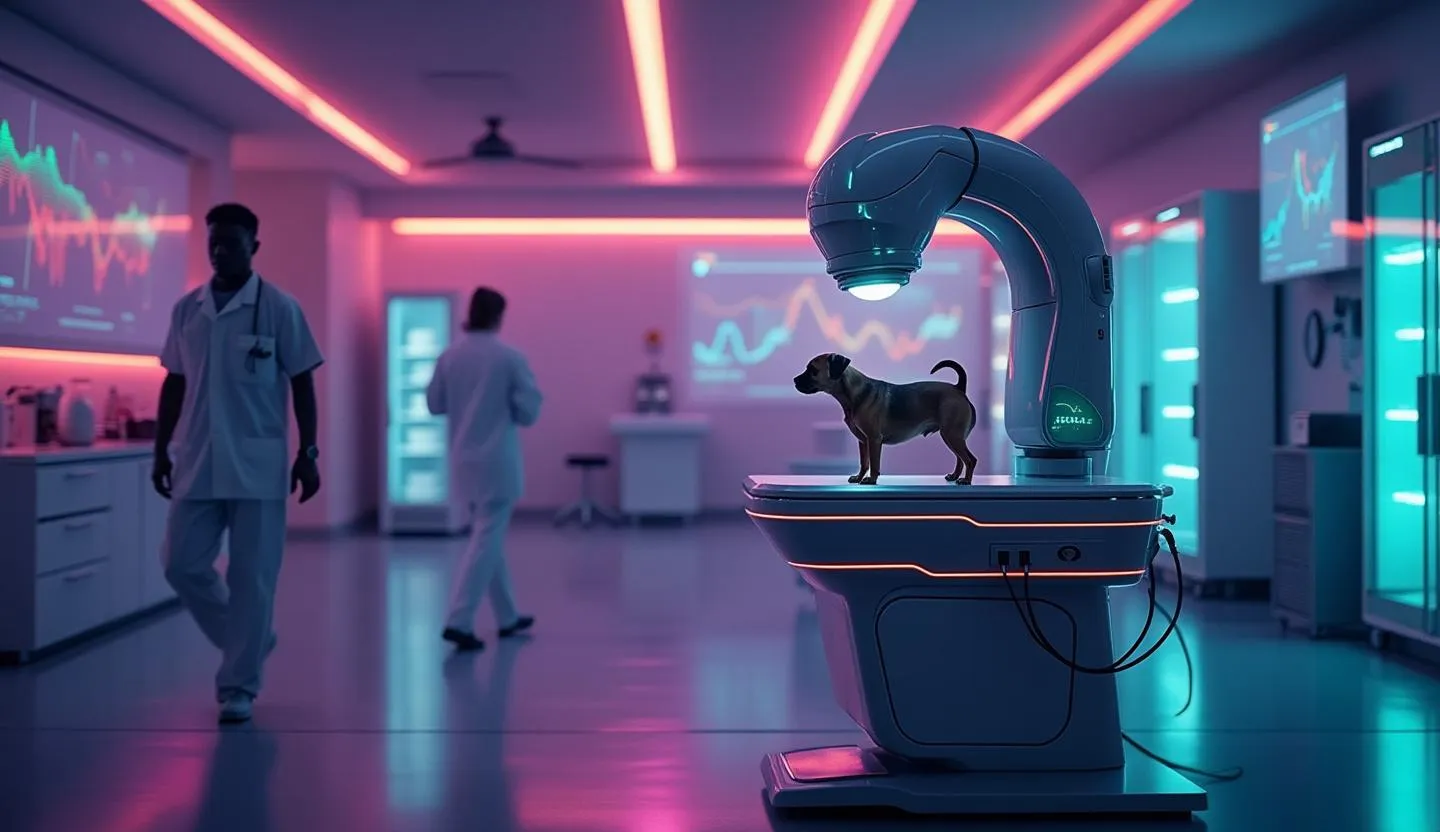Dividend Strength and Defensive Moats Under Pressure in Today's Healthcare Sector
Zoetis (ZTS), the global leader in animal health pharmaceuticals and vaccines, enters today’s session with a notable decline of -1.45%, trading at $156.50 on early volume. As the S&P 500 healthcare sector faces cyclical volatility and investor sentiment shifts toward value, Zoetis stands out as a bellwether for the animal health industry—a sector often prized for its recession-resistant qualities and robust, recurring revenue streams from livestock and companion animal products. But with shares down nearly 20% from their 52-week highs and underperforming both the broader market and sector peers, questions arise: Is this a tactical opportunity for long-term dividend investors, or a signal of deeper operational or market stress?
Key Takeaways
Decline of -1.45% in early trading, with shares at $156.50 and below their previous close of $158.80, on volume of 2,106.
Recent analyst and media coverage frames Zoetis as a dividend growth contender but notes valuation headwinds compared to global peers (see Zacks: SGIOY or ZTS - Which Is the Better Value Stock Right Now?).
Broader market weakness: Healthcare stocks, including Zoetis, are under pressure as defensive sector rotation gives way to macro-driven risk-off sentiment.
Long-term prospects remain tied to recurring revenue, innovation pipeline, and pricing power.
Zoetis’ Market Position: The Veterinary Giant at a Crossroads
Animal Health Fundamentals: Business Model and Sector Context
Zoetis is the world’s largest pure-play animal health company, spun out of Pfizer in 2013. Its business is diversified across livestock (cattle, swine, poultry) and companion animals (dogs, cats, horses), with a strong focus on vaccines, anti-infectives, parasiticides, and diagnostic products. The company’s moat is built on:
Deep relationships with veterinarians and producers
A global distribution network spanning more than 100 countries
A robust R&D pipeline that has delivered category-defining products like Simparica and Apoquel
While animal health tends to be less cyclical than human pharma—driven by stable pet ownership trends and protein consumption—Zoetis is not immune to macroeconomic headwinds, regulatory changes, or competitive innovation.
Recent Performance Overview: Downward Drift Amid Defensive Rotation
Despite its defensive reputation, Zoetis shares have underperformed the S&P 500 in recent quarters. After closing yesterday at $158.80, ZTS trades at $156.50 in early trading, down -1.45%. The session’s volume, while still building, is a fraction of its average daily turnover, suggesting a cautious open rather than a panic sell-off.
Trailing 12-month performance:
Shares are down approximately 20% from their 52-week highs.
The company’s market capitalization has contracted in line with sector multiples, as healthcare investors reassess the premium for predictable cash flows.
Analyst & Market Sentiment: Value, Income, and Growth in Focus
Recent Zacks analysis (“SGIOY or ZTS: Which Is the Better Value Stock Right Now?”) frames Zoetis as a solid long-term holding but notes that, on a pure value basis, Japanese rival Shionogi offers a more attractive risk-reward profile. Meanwhile, The Motley Fool highlights ZTS as a “magnificent S&P 500 dividend stock” that may be attractive on this pullback for patient investors:
“For investors focused on the long game, there is little reason to sell—at least, so long as a company generates solid returns through consistently improving financial results, regularly increases its dividend (if it pays one), and maintains strong growth prospects.” (The Motley Fool, July 6, 2025)
However, sentiment is tempered by valuation anxiety and market-wide de-risking.
News and Sector Context: Defensive Sectors Lose Their Shine
Healthcare, especially the pharmaceuticals and animal health sub-segments, entered 2025 with high expectations as defensive havens. However, profit-taking, rotation into cyclical growth names, and concerns about drug pricing reforms have weighed on the sector. Zoetis, with its global reach and relatively stable end markets, has not been spared.
Recent news flow has focused on:
Comparative value vs. international peers (Zacks)
Dividend growth and long-term holding thesis for income investors (The Motley Fool)
Performance Metrics Table
Metric | Value |
|---|---|
Current Price | $156.50 |
Previous Close | $158.80 |
% Change (Today) | -1.45% |
Volume (Early Session) | 2,106 |
52-Week High | ~$195 |
52-Week Low | ~$150 |
Dividend Yield | ~1.1% |
Market Cap | ~$73B |
Analyst Upgrades, Downgrades & Forward Outlook
No major analyst rating changes in the immediate news cycle, but ongoing coverage emphasizes a split between value-oriented skeptics and long-term dividend growth buyers.
Consensus price targets remain in the $175–$200 range, implying upside if execution is maintained and sector sentiment stabilizes.
Key risk factors: Regulatory pressure on animal pharmaceuticals, potential for generic competition, and foreign exchange volatility given Zoetis’s global footprint.
Navigating Volatility: Is Zoetis a Buy on Weakness?
The current drawdown in Zoetis presents a classic dilemma for investors: do you trust the company’s long-term recurring revenue, innovation pipeline, and dividend growth record—or do you heed valuation and macro risks amid sector rotation?
Checklist for Investors
Review dividend growth history: Zoetis has increased its dividend every year since its IPO.
Assess competitive positioning: Patented blockbuster products anchor the moat, but patent cliffs and R&D execution are critical.
Monitor regulatory and macro trends: Drug pricing, veterinary practice consolidation, and protein demand trends all impact the outlook.
Gauge sector allocation: Is your portfolio overweight in defensive healthcare names?
Conclusion: Zoetis in the Spotlight—Defensive Quality, But Not Immune
Zoetis’s early-session underperformance underscores a broader cooling in defensive healthcare stocks. While the company’s recurring revenue, strong brand, and dividend growth potential remain intact, valuation normalization and sector headwinds have taken center stage. The dilemma is nuanced: ZTS may offer long-term compounding and stability, but near-term caution is warranted until sector momentum and sentiment recover. Watching for fundamental inflection points—be it a new product launch, a regulatory win, or a decisive analyst upgrade—will be crucial in timing any new entries or additions to this sector stalwart.

.svg)
.svg)
.svg)
.svg)

.svg)

.svg)
















